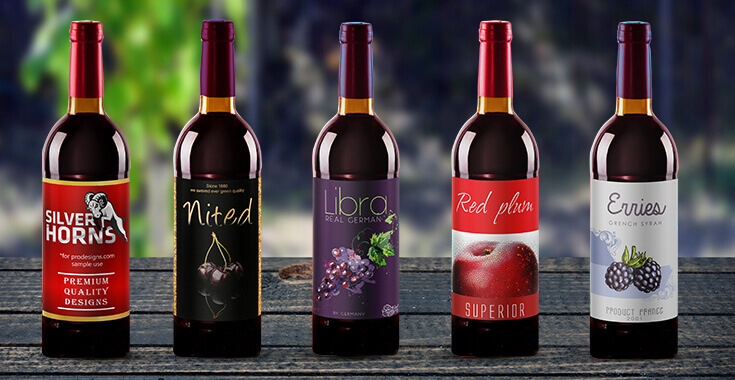One of the most popular drinks in the US is wine. An article in news.gallup.com states, “Beer continues to be the alcoholic beverage US drinkers say they drink most often; but, for the first time in Gallup trends, liquor essentially ties wine in second place”.
According to winebusiness.com, total sales of US wines rose 3% to $50.5 billion in the 12 months ended February. In February alone, it sold $3.5 billion. However, this does not indicate which brands sold better and which weren’t popular.
This brings us to the question: Is the quality of wine essential in attracting customers? You’d tend to say yes. You’re absolutely right, but this may not always be true. The way you package and market the brand is as important. And one of the most essential elements in attracting buyers is the neatly designed wine label on the bottle.
Frankly, without a wine label you’d never know what a particular wine is all about, its source and, of course, it’s price. Since, hundreds of wine brands compete with each other, it’s the label design that becomes indispensable in enticing customers to buy it. This is the selling power of a label.
So, it you’re in the winery business, the label you design for your wine bottle is as important, if not more, than the quality of wine in the bottle. It, more often than not, determines the buyer’s choice. Creatively thought-out designs of wine shipping boxes and shipping labels can be used to lure the buyers.
Importance of a wine label
The first thing that catches the buyer’s attention is the wine label. A survey conducted by wine.net found that more than 80% of people picked a bottle of wine based on the label’s look, 65% chose based on how expensive they thought the wine looked, and just over half considered the shape and color of the bottle itself. The region factored in for nearly 60% of people.
#1 Information on the label
The typical information that a label should provide includes: Country of origin; Producer’s name & location; Variety of grape; Name of vineyard; Vintage or non-vintage; Alcohol content; Sulfites; Sweetness level (dry); and Volume. Wine shipping label needs to provide Customer Details, Country Code, Order Number, Fragile or not, Bar code details etc.
#2 Design of the label
The above survey indicates that irrespective of the shape of the bottle or the price of wine, a wine label dressing sells better. However, in designing your label, you need to be clear, whether your target consumers are young people, who prefer original tastes, or connoisseurs of wine, who savor traditional tastes with a long history. For the former, a fancy font and design is more appropriate, and for the latter, the label needs to be more elegant and appealing.
#3 Different label styles
There are four popular style ideas for labels.
● Depicts history and tradition: It usually portrays a premium character, where the typography mimics handwriting, usually gathered around or beneath a simple, hand-drawn picture. Example: 2009s Chateau De La Ligne.
● Uses abstract art and design: It uses artistic graphics, asymmetrical shapes and typography with contemporary fonts meant to catch the attention of a confused buyer. Example: Jake Busching.
● Implements minimalism: In this the label is reduced in size by reducing the graphics and the printed text. It may have bold color mashups and contrasts. Example: Saramago.
● Infuses modern trends: It may include humorous, cheeky or cocky design to make it funny or intriguing to grab the customers’ attention. Example: Elderslie Hill.
#4 Descriptor on the label
A descriptor on the label is meant to engage the customers, especially the discerning ones. For them, the descriptor provides what they’re looking for in the product. A descriptor enhances the appeal for buyers who’re on the lookout for more information. Use a florid descriptor to tell the story of your wine, its production process, the variety of grapes used and the floral scents. This is sure to attract buyers, who possess an in-depth knowledge about wines.
Conclusion
Wine labels, in addition to providing the basic information about the wine, also act as crowd pullers. This is the reason why hundreds of wine labels vie with each other to grab the eyeballs.


0 Comments